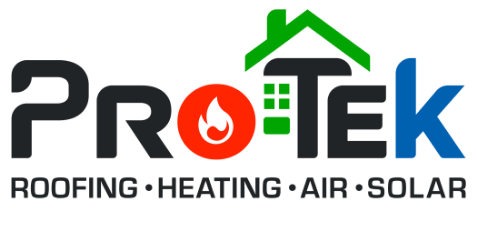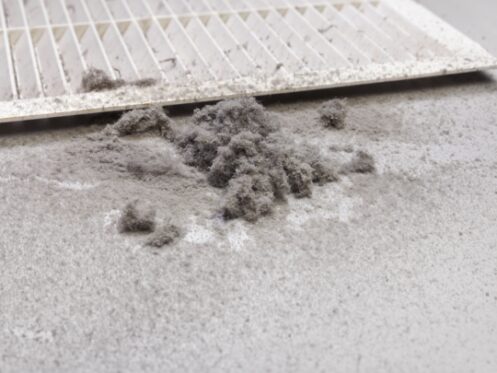Indoor air quality is an often-overlooked aspect of home maintenance, yet it is a critical part of keeping you and your loved ones safe and healthy. Poor indoor air quality leads to a wide variety of health issues, from headaches and allergies to serious issues such as lung cancer and even heart disease.
Monitoring air quality in your home will help you identify and address potential problems, ensuring that your indoor air quality is clean and safe for you and your loved ones. Taking the right steps to monitor and address potential quality concerns will be an integral part of proactively managing your health.
Causes of Poor Indoor Air Quality
There are many potential contributors to poor indoor quality, particularly if your home HVAC system has not been cleaned and well-maintained. A few of the major players in this pollution include:
Outdoor Pollutants
Outdoor air pollution can easily enter your home through open doors and windows, as well as gaps in walls, roofs, and foundations. This air quickly becomes trapped, circulating throughout your home via your HVAC system and potentially wreaking havoc on your health.
Toxins and Chemicals
Household products such as paint, cleaning supplies, and pesticides can release harmful chemicals and toxins into the air that you breathe. Airborne or spray products are particularly harmful, as they are
designed to propel through the air as they travel to intended surfaces. Some of this excess spray and residue becomes airborne, saturating your HVAC filter and making its way into your ductwork where it continually circulates through living spaces, putting you at risk for health complications.
Mold and Mildew
Mold and mildew develop due to high humidity levels and water leaks in your home. These toxic substances release spores into the air that can cause allergic reactions and respiratory issues.
Secondhand Smoke
Smoking while indoors releases a variety of harmful chemicals and toxic smoke into the air, including nicotine and carbon monoxide. This causes a number of issues as you continue to breathe it in day after day.
Pets
Pet dander, hair, and urine are all contributors to poor indoor air quality. Daily cleaning up after your pets helps a bit, but more proactive filtration may be necessary to reduce potential health complications.
Radon
Radon is a colorless, odorless, radioactive gas that seeps into homes through cracks in your foundation. This harmful gas is known to cause lung cancer in some people.
VOCs
Chemicals emitted from certain products and activities, such as off-gassing from new furniture, carpets, and cleaning products, can cause health problems with continued exposure.
Poor Ventilation
Insufficient or poor ventilation leads to the accumulation of excess pollutants inside your home. Opening doors and windows periodically is an excellent way to remove stagnant, saturated air from your home.
Consequences of Poor Indoor Air Quality
Poor indoor air quality not only cakes your home with dirt, dust, and debris, but it can also open the door for a number of potential health consequences, some of which are severe. Signs and symptoms that you may be getting ill from your indoor environment include:
- Coughing, sneezing, and shortness of breath
- Allergic reactions that manifest as runny nose, itchy eyes, and skin rashes
- Headaches and ongoing fatigue
- Irritation of the throat, nose, and eyes
- Dizziness, nausea
- Asthma attacks
- Rapid pulse
None of these symptoms should be dismissed or ignored as inconsequential. All can evolve into severe, life-threatening situations if your indoor air quality goes unchecked and unresolved. Here are some other health issues that can arise as a result of being exposed to poor air quality on a daily basis.
Respiratory Infections
Respiratory distress may begin as coughing and sneezing, but it can quickly turn into something more severe if your lungs don’t get a break from the constant barrage of pollutants in your home. Infections can creep up gradually, taking hold of fragile lung tissue and causing issues such as fluid accumulation, trouble breathing, and even scarring of the lungs. If not treated promptly, these respiratory diseases can lead to a lifetime of chronic respiratory issues that may require medical intervention and ongoing care to maintain lung function.
Asthma Attacks
Asthma attacks are extremely scary for an individual; the very thought of having difficulty breathing is enough to evoke additional feelings of anxiety and fear that exacerbate an asthma attack. Those prone to respiratory issues and asthma should be especially diligent about improving indoor air quality to reduce the likelihood of asthma attacks and promote a healthier environment that reduces irritation and asthma triggers.
Heart Disease
Exposure to fine particulates found in indoor air samples has been linked to an increased risk of heart disease. The inflammatory response brought on by these particulates can cause hardening of the arteries leading to the heart, which puts strain on the muscle as it attempts to move blood throughout the body. An increased risk of heart attack and stroke are both present with conditions like heart disease, so it is especially important to remain committed to keeping the air clean in and around your home to reduce the possibility of developing heart-related conditions.
Chronic Fatigue
Chronic fatigue syndrome is a condition characterized by severe, long-term fatigue that cannot be relieved by rest or attributed to another underlying medical condition. People who develop chronic fatigue syndrome as a result of being exposed to indoor air pollutants find it extremely difficult to carry out normal activities and daily routines. Some symptoms of CFS include:
- Fatigue that lasts more than six months
- Difficulty sleeping
- Joint and muscle pain
- Headaches
- Memory issues, cognitive concerns
- Anxiety and depression brought on by lack of refreshing sleep
Doing what is needed to clean up your indoor environment may reduce or even eliminate some of the symptoms caused by CFS, as well as provide you with some much-needed rest to improve your overall health and mental well-being.
Developmental and Reproductive Issues
Exposure to certain indoor pollutants such as chemicals, lead, and pesticides can cause developmental and reproductive issues in both adults and children. These effects may not be immediately known, but continued exposure to these toxic chemicals will inevitably reveal themselves over time as family planning is attempted or children are born with developmental and cognitive impairment.
Keeping Your Home Clean and Comfortable: We’re The Experts!
As you can see, the importance of maintaining and improving indoor air quality is an essential part of protecting you and your loved ones from long-term health consequences, some of which are incredibly severe. Taking steps to maintain and service your HVAC system, monitor indoor aerosol and chemical use, and remove stagnant, polluted air through your home by means of circulation and air purification will all be needed to reduce and even eliminate the effects of toxic indoor air pollution.
Serving valued clients in the Tampa area and beyond, Protek Roofing, Heating, Air & Solar has solutions and services for a number of your home needs. Heating and cooling installation and repair, roofing repair and replacement, ductless mini split installation, heat pump service and installation, and indoor air quality inspections are just a few of the many services we provide our valued customers. If you suspect that your indoor air quality needs a breath of fresh air, contact us to see how we can help.




